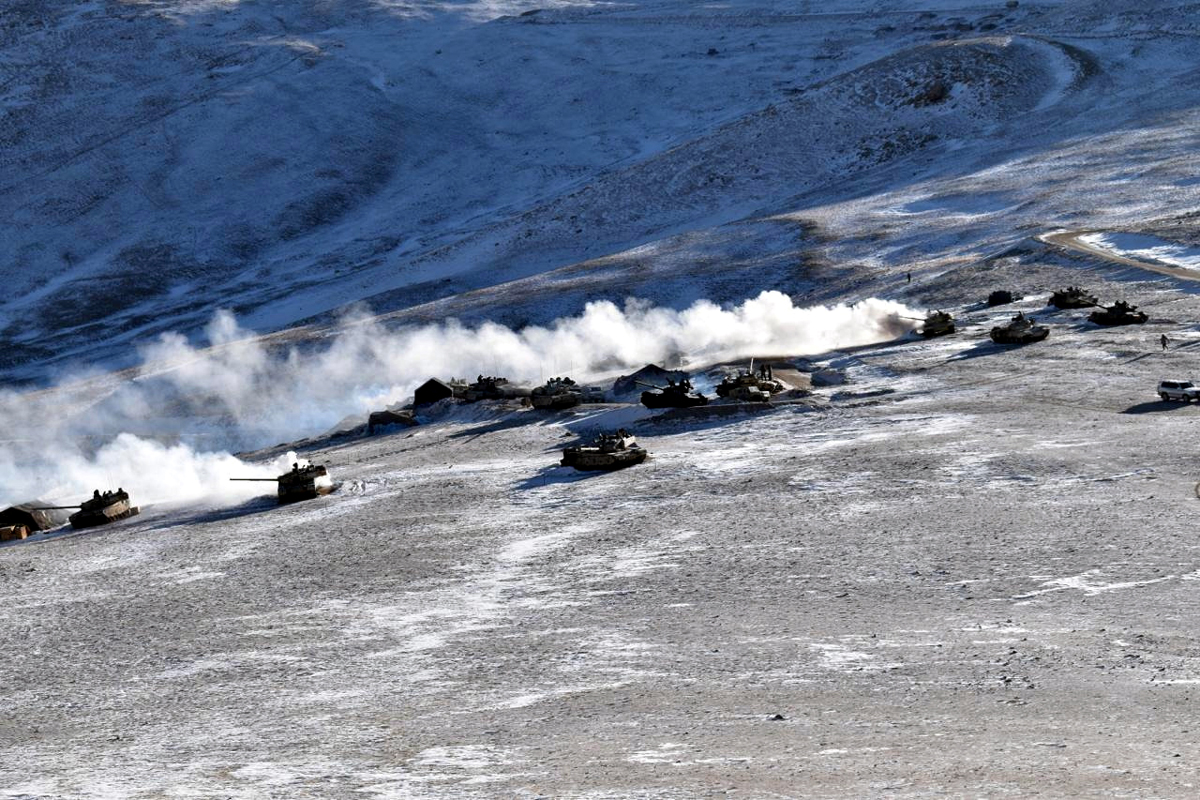The recent announcements from the Indian Army regarding enhancing its artillery units along the China-India border underscore a critical shift in military preparedness and strategy. As the geopolitical landscape continues to evolve, particularly in the context of heightened tensions with China, the Indian Army is proactively modernising its artillery capabilities to bolster its operational effectiveness. This multifaceted approach, procuring advanced weapon systems and technological innovations, signals a significant commitment to national security and defence readiness.
At the forefront of this modernisation effort is the addition of 100 K9 Vajra howitzers, a cutting-edge artillery system that has already proven its mettle in various terrains. Originally designed for desert operations, the K9 Vajra has been effectively deployed in the challenging high-altitude regions of Ladakh, demonstrating its versatility and reliability. This adaptability is crucial, given the unique challenges posed by the region’s geography and climate. The army’s focus on such advanced platforms illustrates its understanding that modern warfare demands equipment that can operate effectively across diverse environments. Moreover, the inclusion of swarm drones and loitering munitions in the artillery arsenal is indicative of a broader recognition of the changing nature of warfare. Traditional artillery units are evolving into more integrated and technologically advanced formations that can conduct precision strikes with enhanced situational awareness. The use of swarm drones, for instance, enables the Army to gather real-time intelligence and conduct reconnaissance missions, thus providing commanders with a comprehensive view of the battlefield. Such capabilities are essential for making informed decisions and ensuring effective coordination between ground forces.
The emphasis on hypersonic missile development further amplifies India’s strategic deterrence capabilities. Hypersonic missiles, capable of flying at speeds exceeding five times the speed of sound, pose a formidable challenge to adversaries by significantly reducing reaction times and increasing strike accuracy. This technological leap not only enhances India’s defence posture but also serves as a powerful deterrent against potential aggressors. The ongoing research and development efforts by the DRDO signal a proactive approach to maintaining a competitive edge in missile technology.
The integration of various artillery systems, such as the Advanced Towed Artillery Gun System (ATAGS) and the Dhanush, demonstrates a commitment to leveraging indigenous capabilities. The ATAGS, developed in collaboration with private sector partners, represents a significant step towards achieving self-reliance in defence manufacturing. This “Atmanirbharta” initiative is crucial, as it not only reduces dependency on foreign suppliers but also fosters domestic innovation and job creation. The timely induction of these systems into the artillery regiments will undoubtedly enhance the Army’s operational effectiveness.
While the procurement of advanced artillery systems is a commendable step, it must be complemented by robust training and development programs for personnel. Additionally, the focus on improving the range and accuracy of existing rocket systems, such as the Pinaka, is a crucial aspect of enhancing artillery capabilities. The ongoing efforts to extend the Pinaka’s range to 300 kilometres reflect an understanding of the necessity for artillery units to engage targets at greater distances, thereby minimising exposure to enemy fire. As the Army seeks to bolster its firepower, it must also prioritise advancements in precision-guided munitions to ensure that strikes are not only powerful but also accurate.
The drive to enhance surveillance and target acquisition capabilities further complements the overall artillery modernisation initiative. The integration of advanced surveillance systems, remotely piloted aircraft (RPAs), and loitering munitions will enable artillery units to operate with greater situational awareness. The ability to quickly identify and engage high-value targets is essential for maintaining the element of surprise and achieving tactical superiority in modern warfare.
The Army’s commitment to enhancing its artillery capabilities in Ladakh is a proactive and necessary response to evolving security challenges, fully backed by the Government. As geopolitical tensions continue to rise, India must remain vigilant and ready to protect its national interests. This modernisation effort reaffirms India’s commitment to maintaining regional stability and security.
Trending Now
E-Paper


